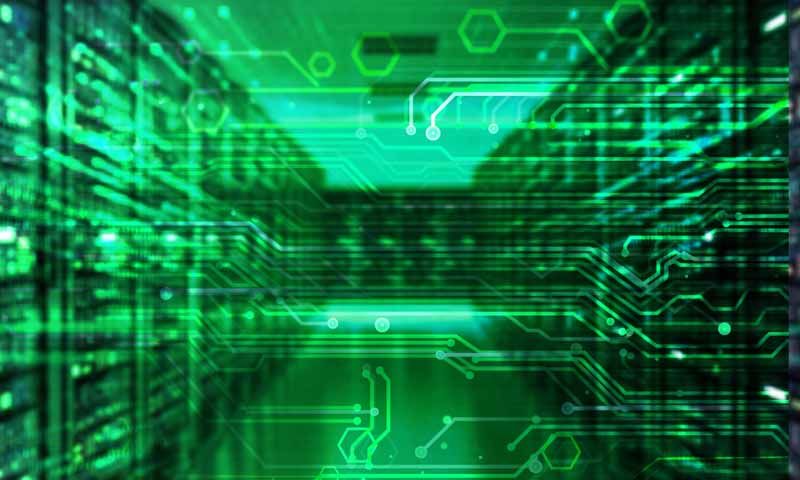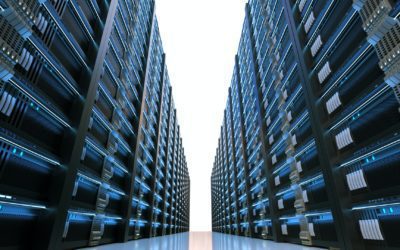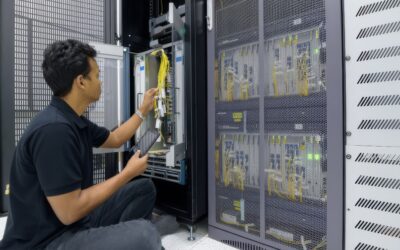Numbers — many equations are used to illustrate the current and future ‘consumption’ of data centers, but do we really know it exactly? I have made inquiries with various authorities that should know, but there is no unequivocal answer to the question of how much power data centers in the Netherlands consume. Isn’t it time to finally map this out with a new data center energy protocol?
A quick search provides many answers to the question of how much energy data centers actually use:
- A lecturer from the University of Twente warns: too little power for internet means the end of unlimited internet. In 5 years’ time, 20% of the entire electricity production will be spent on data traffic, good for 15% of the total CO2 emissions. (source: Tubantia).
- Energy consumption 2018: 654 MW multi-tenant and 688 MW single-tenant (source: Dutch Datacenter report 2018).
- Energy consumption 2019: 1503 MW data centers, 80% green energy (source: Dutch Datacenter report 2019).
- The sector encounters capacity problems 6.2 PJ electricity consumption, 10% of the total electricity demand in North Holland (source: report CE Delft 2020–2050).
- Data centers consume three times as much power as the NS (source: NRC).
- NS annually uses as much electricity as the entire city of Amsterdam (source: Metro).
I wonder: where does this mess of numbers come from? Although I understand that stakeholders have their own interests and stick to figures that best substantiate their views. One talks about the energy contracts with suppliers, the other about the actual energy consumption or refers to the maximum power capacity of a data center. How many servers are installed and with what power? I don’t know, do you know?
From PUE to DIC
I have lived through the era of PUE, where data centers have finally achieved a huge efficiency gain with regard to infrastructure. Further PUE improvement on the infrastructure side of the DIC costs a lot of money and yields a little. As a next step, Mees Lodder, Dirk Harryvan, Max Amzarakov and the undersigned have developed a new indicator for energy efficiency. These are the Data Center Idle Coefficient (DIC) and the Server Idle Coefficient (SIC) from which the DIC is calculated. This coefficient relates the CPU load of the IT equipment (% useful / % idle) to the energy consumption and thus provides insight into how energy efficient IT is when it is — say — not busy.
The DIC gives substance to the ‘Recognised Measures’ imposed by the government, of which the activation of the power management function (PM) on servers has already come into effect on 1 July 2019. We believe that this ‘eco-mode’ can yield significant energy savings. At the same time, I think that as a result of the measure, the eco button has only been turned on on few servers. In any case, this new measurement method demonstrates the potential for energy savings and thus provides data center managers and IT users with more insight into their energy consumption. Call it the ‘smart meter’ of the data centers.
Energy management
But how much energy savings is that? At least a lot. But how much? I don’t know. How do we find out? Do the stakeholders want to know, or are there other interests at play? In any case, the climate discussion has accelerated things and put energy management (higher) on the agenda.
But are we really doing energy management? I don’t think so. We know that server capacity and performance has increased much more than energy consumption, but we also see that energy consumption itself has not decreased. In any case, we see in the figures that everyone expects that the energy consumption of IT will continue to grow. Certainly not at the rate of IT performance growth, but still… How much it continues to increase, I don’t know. What do you think?
Energy management is not possible without knowing how many kW data centers use, without knowledge of the size of the underlying energy contracts, how many kW are generated by wind, solar, alternative, et cetera. Energy efficiency and sustainability are buzzwords and good for the image, but it is time to substantiate it with figures, reliable ratios, coordinated and certified by independent institutions.
Transparency helps
How do we achieve this? In any case, by doing it together, together with the government, data centers and interest groups for data centers and ICT. In my opinion, the current ‘Recognised Measure’ of power management for servers does not lead to the desired result in the short term. It is new and concerns many batches and many devices. It calls for attention to be paid to efficiency among people who are currently only judged on availability and continuity. Enforcement of this measure is therefore complex and unclear. In short, that takes time.
What is the solution then? I would like to see a covenant between the parties, which stipulates that monthly reports are made to the government. Server owners report the data and provide insight into the energy consumption and behavior of the servers. Relevant data has been present at the heart of IT equipment for many years. BIOS, ILO and other software keep track of this data. Data centers report their total energy consumption and the energy consumption consumed by the servers on a monthly basis. On the basis of this information, the government can then make regulations. In consultation with the interest groups for data centers and ICT users, they can use the information for accountability to their stakeholders and to society.
Ultimately, we must be able to test objectives against actual figures and analyze the impact of measures on the basis of reliable figures. Otherwise it will remain a mush of numbers and fancy words with no tangible results.
Bright spot: in the LEAP project of the Amsterdam Economic Board, a number of renowned companies with a large ‘IT footprint’ are working together in a pilot. By making consumption data from their equipment available, insight is gained into potential efficiency improvements. WCooliT and Certios participate in LEAP with the DIC measurement method.
Transparency helps. The beginning is here.




